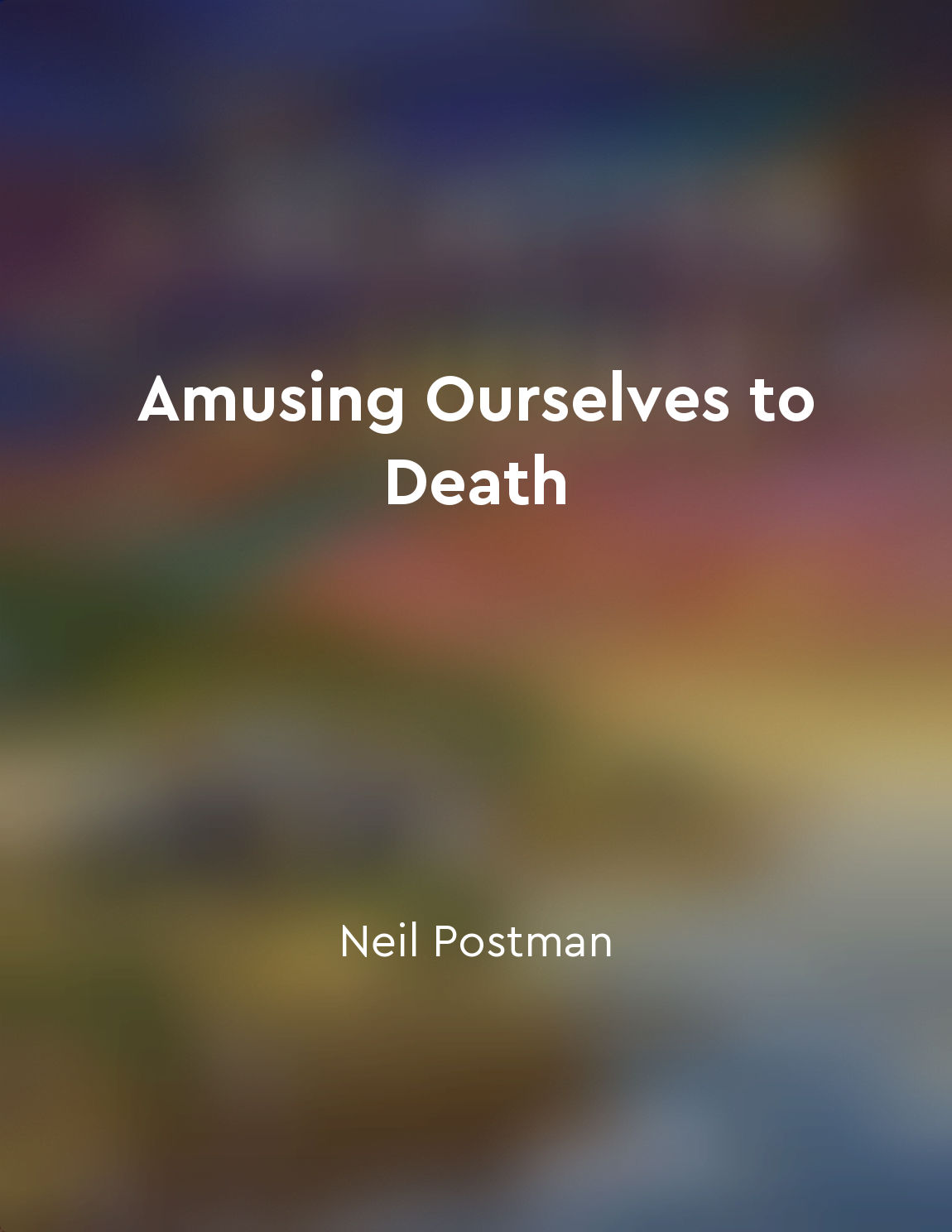Visual media changes how we think and communicate from "summary" of Amusing Ourselves to Death by Neil Postman
In the age of visual media, our ways of thinking and communicating have undergone a profound transformation. The constant bombardment of images and videos has altered the very fabric of our cognitive processes, leading to a fragmentation of attention and a decline in critical thinking. In a society where information is conveyed primarily through visual means, we are increasingly reliant on superficial impressions rather than deep analysis. The rise of visual media has brought about a shift towards a reliance on images rather than words to convey meaning. As a result, our communication has become more superficial and less nuanced. Instead of engaging in thoughtful discourse, we are now more likely to rely on simplistic slogans and catchy visuals to convey our messages. This shift has profound implications for our ability to engage in meaningful dialogue and to grapple with complex ideas. Furthermore, the dominance of visual media has led to a decline in our ability to focus and concentrate for extended periods of time. The constant stream of images and videos has shortened our attention spans, making it difficult for us to engage deeply with complex ideas and arguments. In a world where information is constantly being condensed into bite-sized snippets, we are losing the ability to engage in sustained, critical thinking. The impact of visual media on our cognitive processes is not limited to our ability to focus and think critically. It also affects our capacity for empathy and emotional engagement. When we are bombarded with images of suffering and injustice, we may become desensitized to the plight of others, leading to a diminished sense of compassion and empathy. In a world where images of suffering are constantly being circulated, we run the risk of becoming numb to the pain of others.- The rise of visual media has had a profound impact on how we think and communicate. Our reliance on images and videos has led to a decline in critical thinking, a shortening of attention spans, and a loss of empathy. As we continue to be inundated with visual stimuli, it is crucial that we remain vigilant about the ways in which visual media shapes our cognitive processes and strive to engage in deep, thoughtful dialogue despite the challenges posed by the dominance of visual communication.
Similar Posts
Aesthetic judgement is based on feeling, not concept
In aesthetic judgement, the judgement made is not based on concepts or rules, but rather on the feeling that is evoked by the o...
The Apollonian represents form, beauty, and individuality
The Apollonian representation in the realm of art exemplifies elements of form, beauty, and individuality. The concept of the A...
The internet can lead to echo chambers
The internet has the power to shape our beliefs and attitudes by exposing us to information that reinforces our existing views....
Art can be a form of cultural resistance
In the realm of art and culture, there exists a powerful notion that art can serve as a means of challenging and resisting domi...


